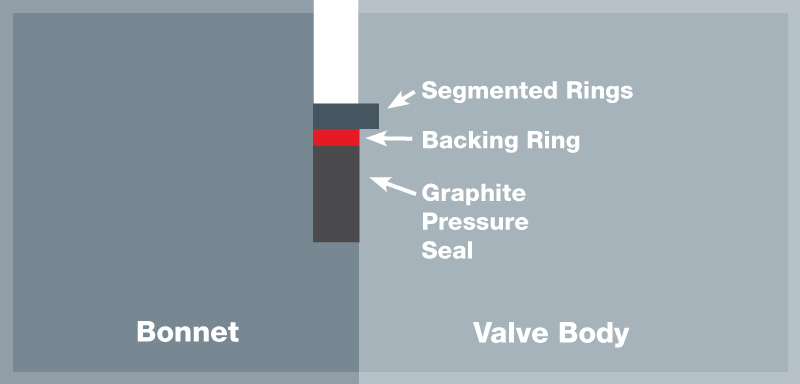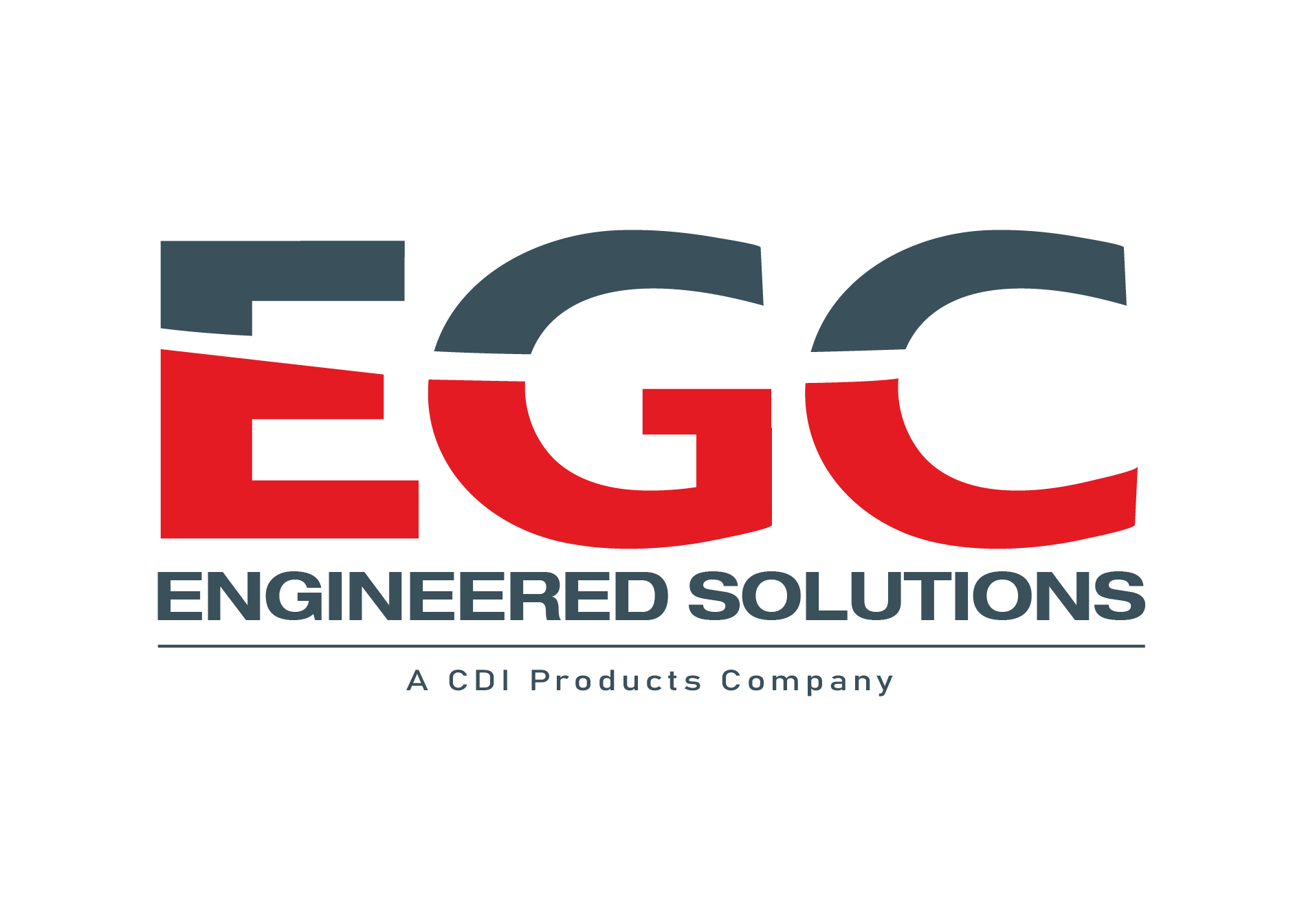The Backing Ring. Sound Sealing Sense!

There is nothing worse than a pressure seal leak or blowout in a plant when it is running. So, it is important to understand the key factors when replacing one in the field.
Our Engineering team has spent three decades designing various graphite pressure seal solutions for the valve industry. In that time, we’ve designed some very important features to ensure containment of our VSG graphite pressure seals.
#1 The segmented keys are typically divided into 4 or more parts and inserted in a groove or recessed inset of the valve body. The segmented rings main function is to ensure that the bonnet, stem and all other interior components (gate, globe, check) do not blow-out of the valve when it is under pressure. It is not a precision part and typically has a large gap between it and the bonnet Neck OD as well as gaps between each ring and below it as the bonnet pulls up. These gaps can lead to unsupported sections of a graphite pressure seal. This can lead to catastrophic failure.
#2 Due to the compressive and fluidic nature of flexible graphite, it needs to be contained! Our Engineers have designed anti-extrusion devised elements into the seal itself to contain the graphite, but in many cases, this is not enough to combat the excessive gaps in the segmented rings.
#3 Consequently, a further solution was needed to solve the gap issues of the segmented ring. This solution is what we now call a backing ring. It’s a metal reinforcement that fits between the segmented keys and a pressure seal. It was originally designed to take up space in the pressure seal cavity to reduce the cost of silver coated metal seals. Today, its purpose is to provide a bearing or guide surface from the body to bonnet as well as a solid support for graphite pressure seals.
So, if a backing ring already exists in the valve that you’re working on, use it again as you install the next pressure seal. As a matter of fact, it’s one of the dimensions we ask for on our measurement data sheets to ensure that there is enough room for both it and the pressure seal ring. If there is no backing ring, EGC will design one for you the next time we replace your VSG pressure seal.
Says Rob Garlock, a VSG engineer, “there are three factors to determine the height of the backing ring. The first is the bonnet Neck Height, the second is the valve pressure and the third is really based on how much room we have. When we design VSGs, it is critical that it compresses to the same height as the original seal. It makes no difference whether it’s metal or graphite. Graphite is compressible so it consumes more space on the bonnet neck than a metal seal. Our task is to design a VSG and backing-ring that can stand up to pressurization, while still allowing for assembly.”
So, the next time you order a VSG pressure seal, don’t forget the backing ring. If you’ve got it, use it again. If you don’t, EGC will make it. As Rob says, “It’s just good practice to have a backing ring”.
For more in information on EGC Power Generation products, call us at 440.285.5825 or visit our website.
Need More Information?
To learn more, visit our main website

EGC Enterprises Inc.
140 Parker Court
Chardon, OH 44024
Phone 1-800-EGC-0211 (U.S.A. only)
or 440-285-5835
Fax 440-285-8337
Email | egc@egcgraphite.com
